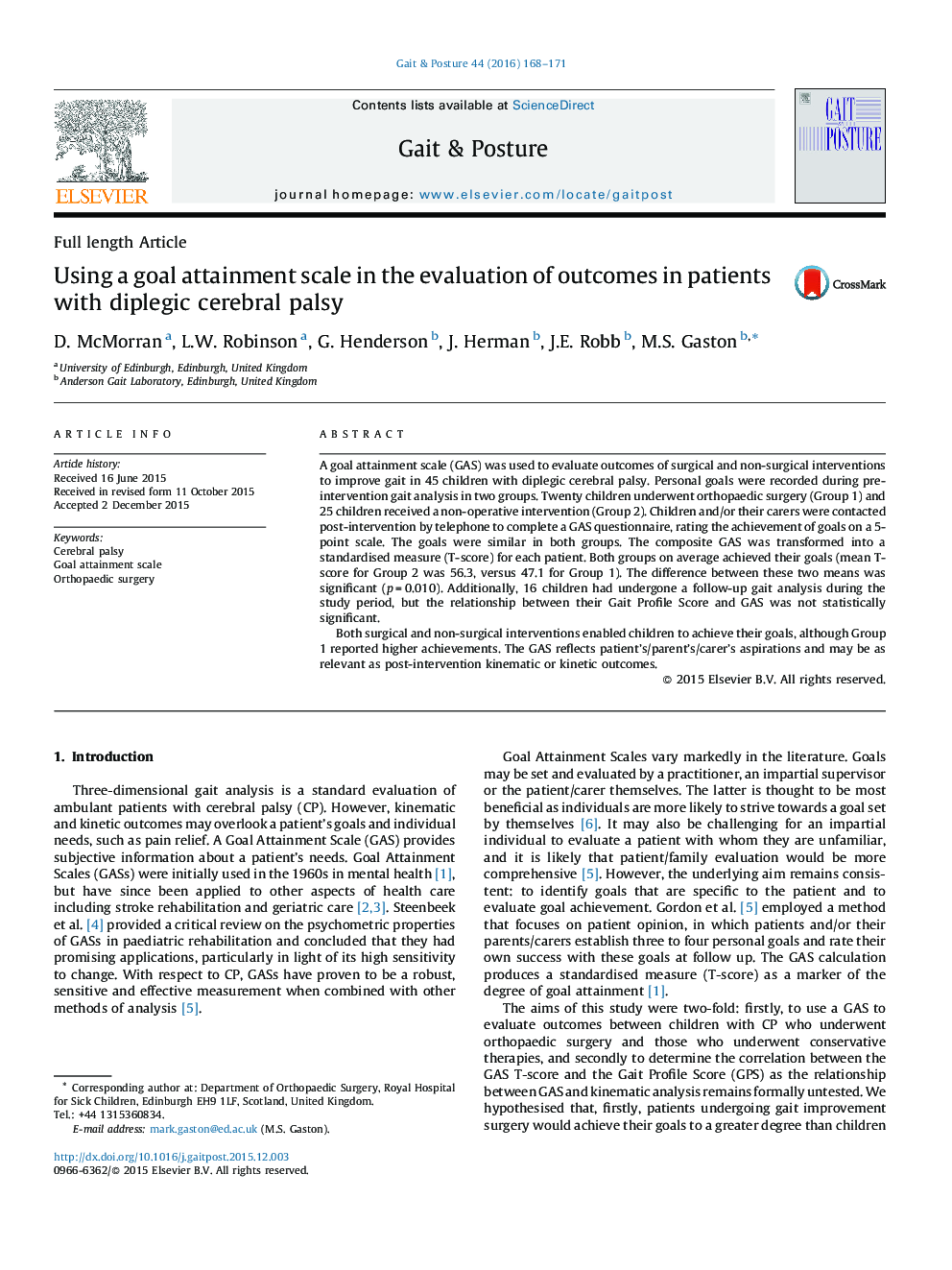| Article ID | Journal | Published Year | Pages | File Type |
|---|---|---|---|---|
| 4055554 | Gait & Posture | 2016 | 4 Pages |
•Goals for aspired improvement are similar in surgical and non-surgical patients.•Both surgical and conservative management attained achievement of goals.•Surgical patients achieved a significantly greater improvement in GAS.•There is no significant correlation between GAS and change in GPS.
A goal attainment scale (GAS) was used to evaluate outcomes of surgical and non-surgical interventions to improve gait in 45 children with diplegic cerebral palsy. Personal goals were recorded during pre-intervention gait analysis in two groups. Twenty children underwent orthopaedic surgery (Group 1) and 25 children received a non-operative intervention (Group 2). Children and/or their carers were contacted post-intervention by telephone to complete a GAS questionnaire, rating the achievement of goals on a 5-point scale. The goals were similar in both groups. The composite GAS was transformed into a standardised measure (T-score) for each patient. Both groups on average achieved their goals (mean T-score for Group 2 was 56.3, versus 47.1 for Group 1). The difference between these two means was significant (p = 0.010). Additionally, 16 children had undergone a follow-up gait analysis during the study period, but the relationship between their Gait Profile Score and GAS was not statistically significant.Both surgical and non-surgical interventions enabled children to achieve their goals, although Group 1 reported higher achievements. The GAS reflects patient's/parent's/carer's aspirations and may be as relevant as post-intervention kinematic or kinetic outcomes.
